This delicious, twice-cooked pork tenderloin with mustard sauce is one of those back-pocket recipes that is sure to become a regular in your kitchen, too!
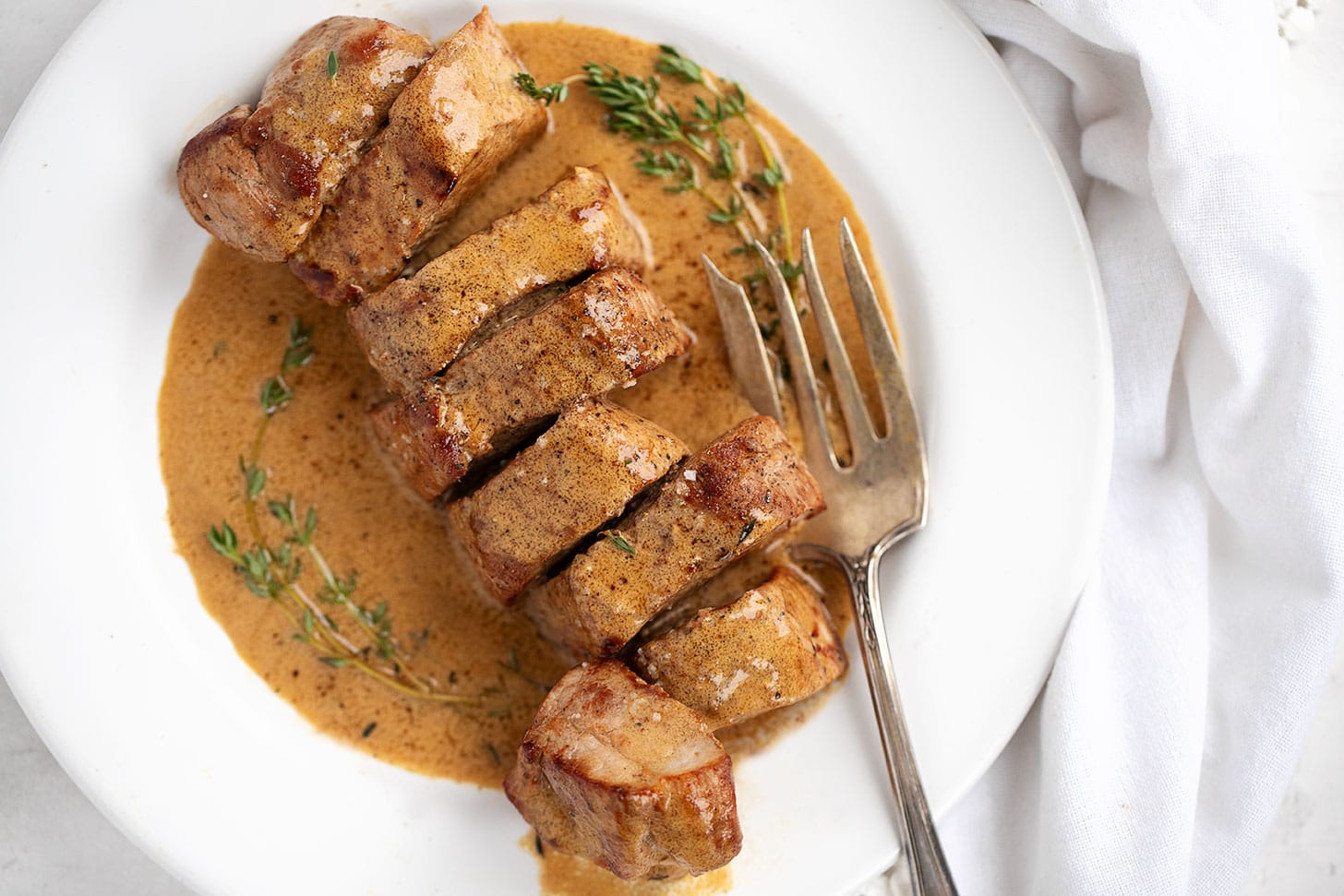
This incredibly simple pork tenderloin recipe is also fabulously delicious and company-worthy! You’ll find yourself coming back to it over and over. You’ll also love that you can use this same cooking method, but switch up the flavours, for a little variety.
Key ingredients and substitutions
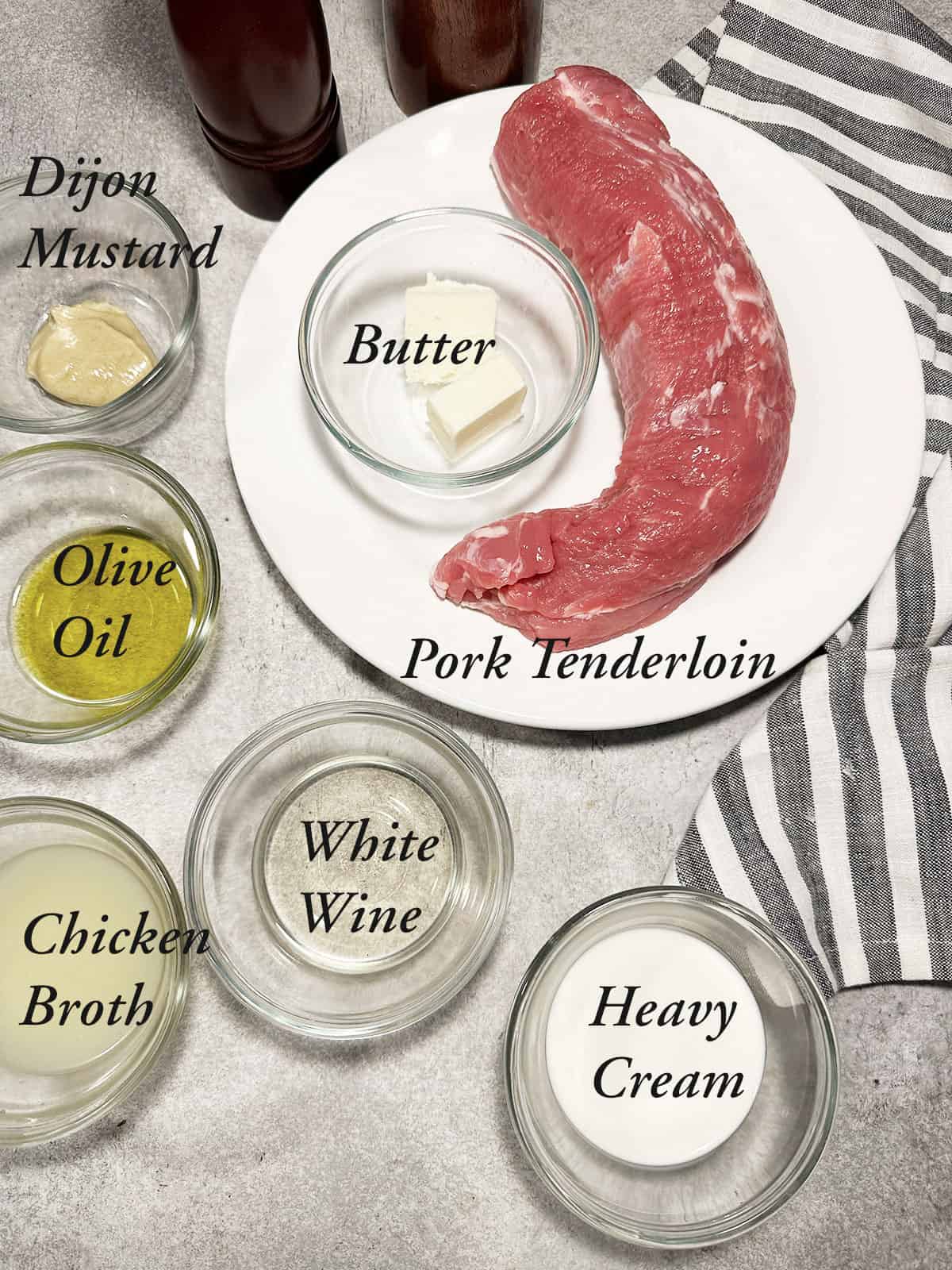
Pork Tenderloin – on large pork tenderloin (about 1 lb.) is all you need. Be sure to remove the silver skin and any visible fat. This helps the pork tenderloin cook more evenly.
Dijon Mustard – classic Dijon mustard will always be great in this dish, but you can certainly use whatever mustard you have or enjoy. Experiment! (Not a mustard fan? You can also swap out the mustard and use lemon juice or Calvados instead. See more Variations below.)
Heavy Cream – heavy whipping cream (35% b.f.) is recommended, as the high-fat content prevents the sauce from splitting when using wine or lemon juice. It also makes for a nice, creamy sauce. You could use a lighter cream if that’s all you have, but it may split. Full-fat sour cream may also work here, as would full-fat Greek yogurt (best added at room temperature and do not boil the sauce after adding). For a dairy-free option, try full-fat coconut cream.
White Wine – white wine is optional here, but a nice touch if you have some on hand. Use any wine you enjoy drinking. If you don’t have or don’t want to use wine, simply replace it with more chicken broth.
Chicken Broth – the addition of half chicken broth cuts the acidity of the wine. You can also replace the wine with more chicken broth. In a pinch, you can even use water in place of both the wine and broth.
Step-by-step photos
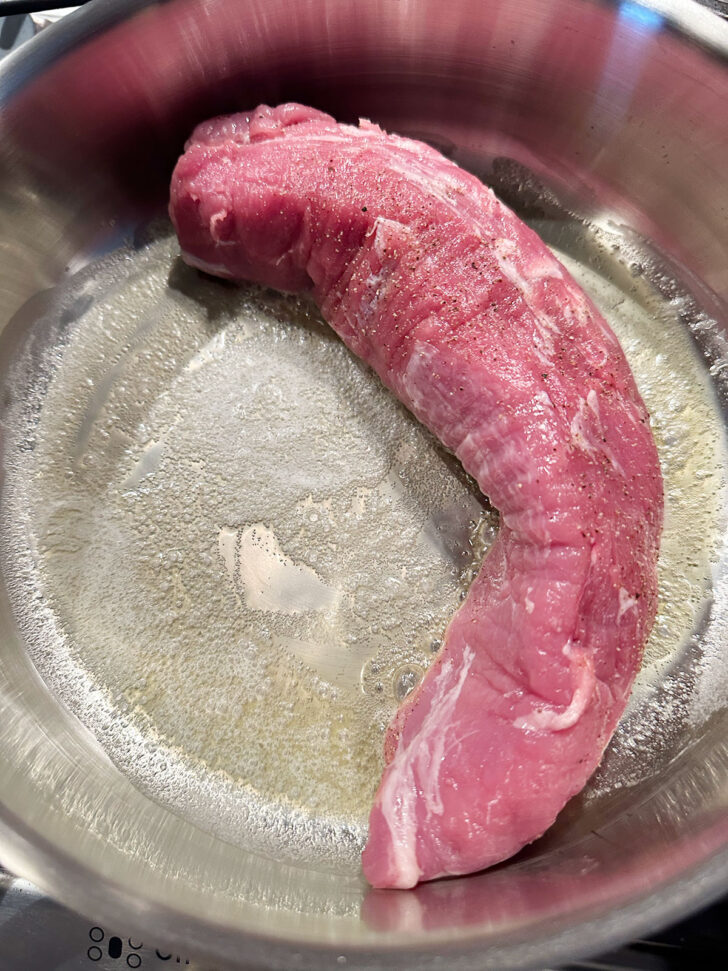
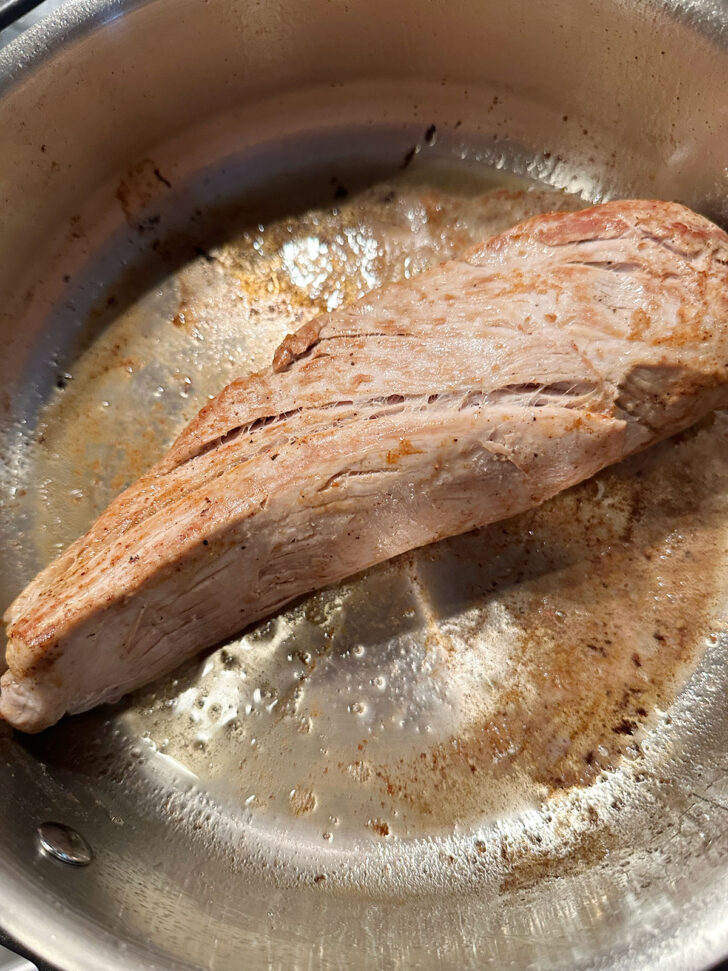
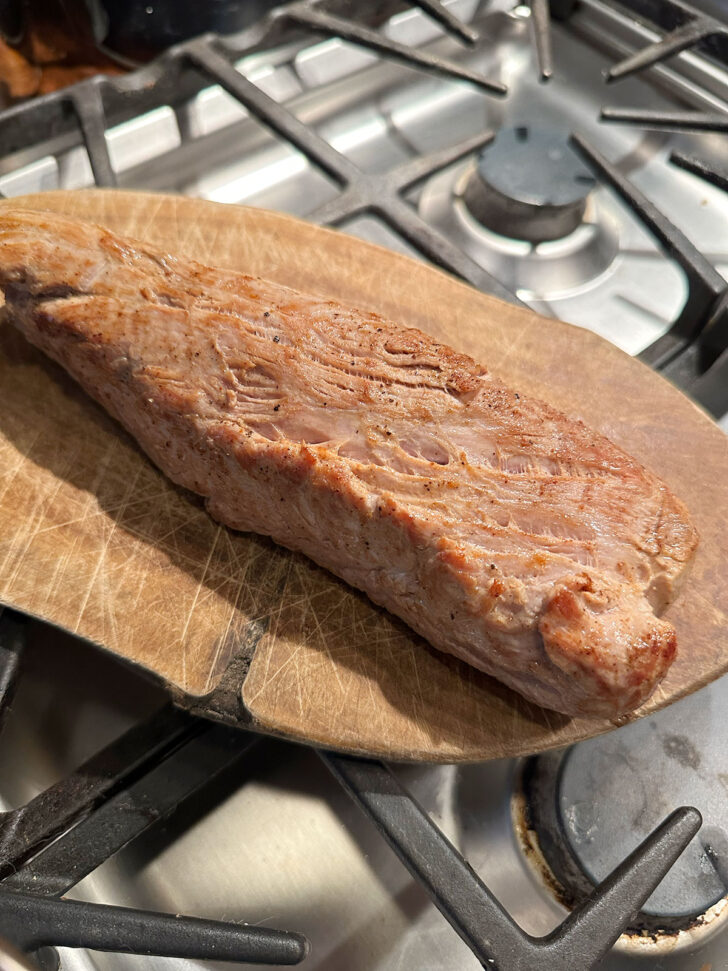
- Heat the oil and butter over medium-high heat, then add the pork tenderloin to the pan.
- Brown the pork well on all sides.
- Remove the pork to a cutting board.
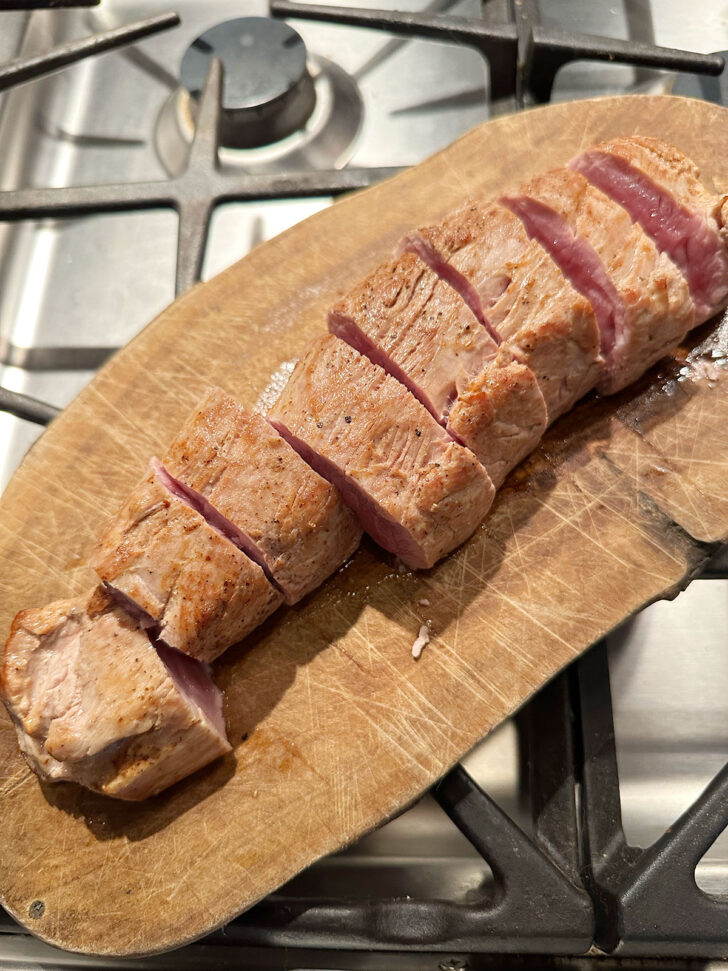
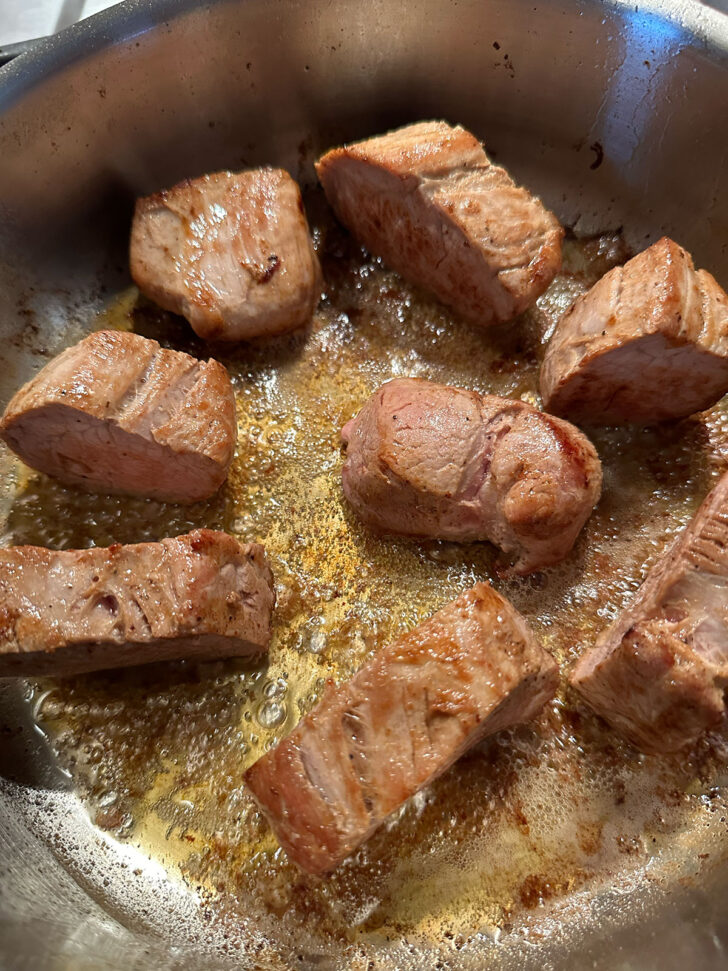
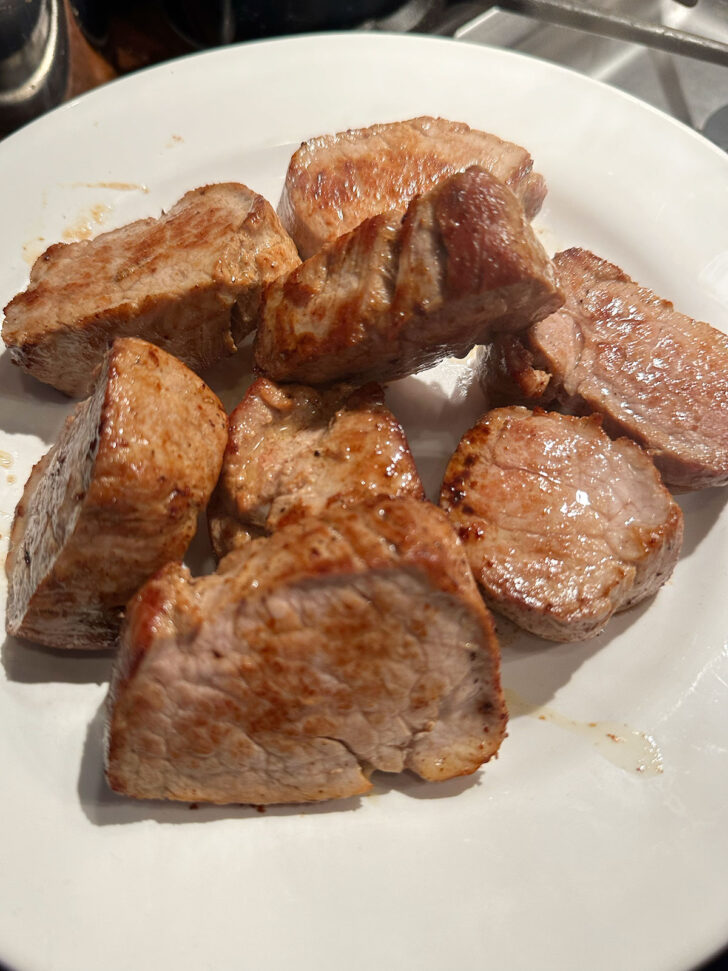
- Cut the pork tenderloin into 1-inch slices.
- Heat some more butter and oil in the same skillet, then add the pork slices back to the hot skillet.
- Brown the pork slices on all sides, then remove to a warm plate.
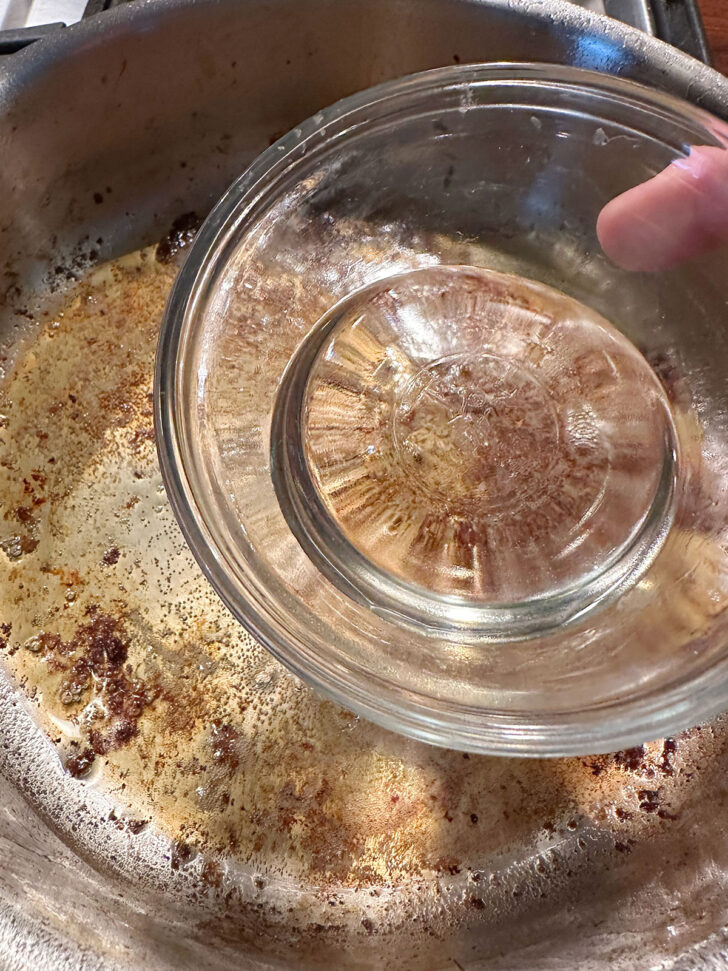
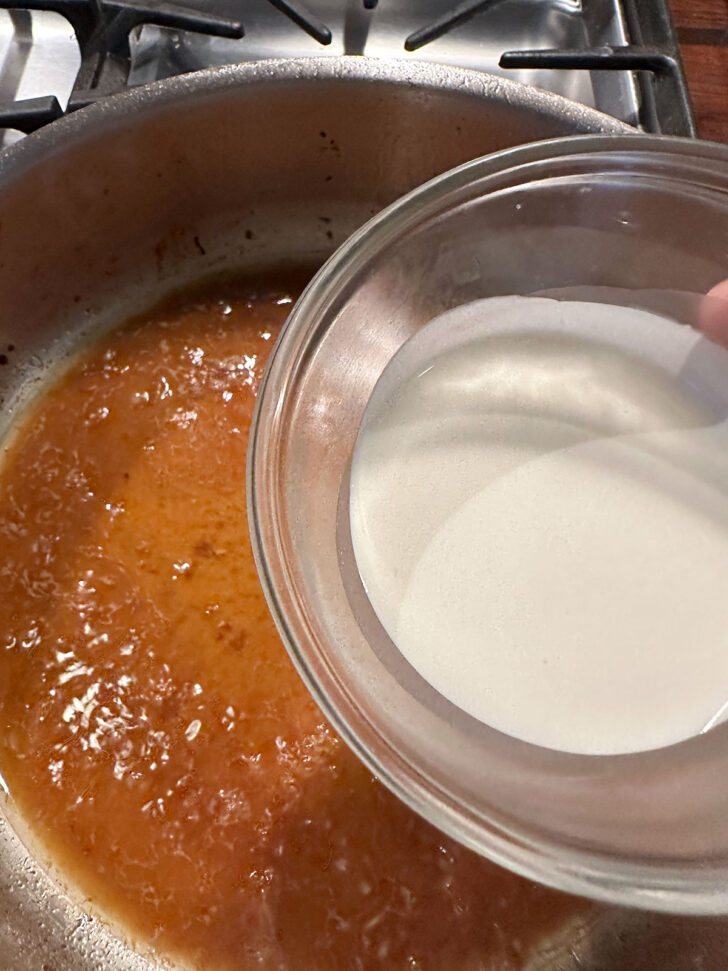
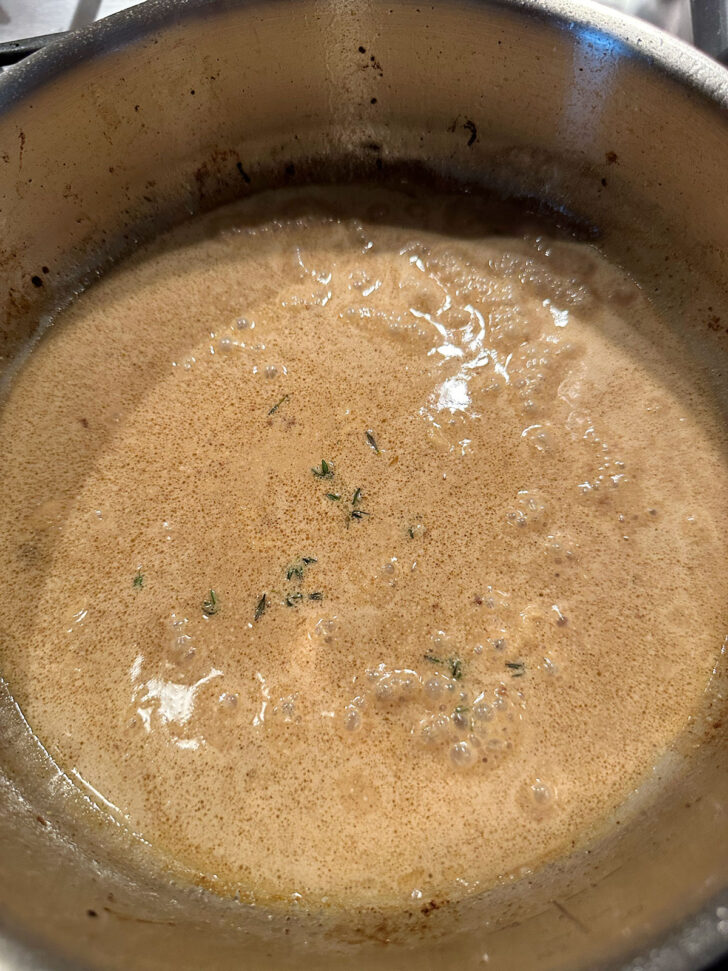
- Add the wine and chicken broth to the skillet and cook while stirring up all the brown bits in the pan.
- Add the cream to the sauce and stir in.
- Add the Dijon mustard to the sauce and stir to combine. Add the thyme leaves, if using, then taste and adjust seasoning as necessary. Pour hot sauce over pork slices and serve.
Recipe video
Top tip!
Start with the right pan! Use either a stainless steel skillet or a cast iron skillet. Don’t use a non-stick skillet. Why? Because non-stick skillets won’t give you those tasty brown bits when browning the pork (known as “fond”) and fond is so delicious it would be a shame to miss out on it.
Variations!
- Swap out the mustard and use lemon juice or Calvados (French brandy made from apples and/or pears)
- Add mushrooms and/or shallots to the mix. Simply sauté the mushrooms until golden, then add some shallots and cook until tender. Remove from the pan and add back to the sauce at the end. (You may want to double the sauce if using mushrooms.)
- Garlic? If you’re feeling it, add a bit and cook briefly, when starting the sauce.
- If you are a sauce lover or would like extra for drizzling on potatoes or rice, consider doubling up the sauce at the end to be sure it’s plentiful.
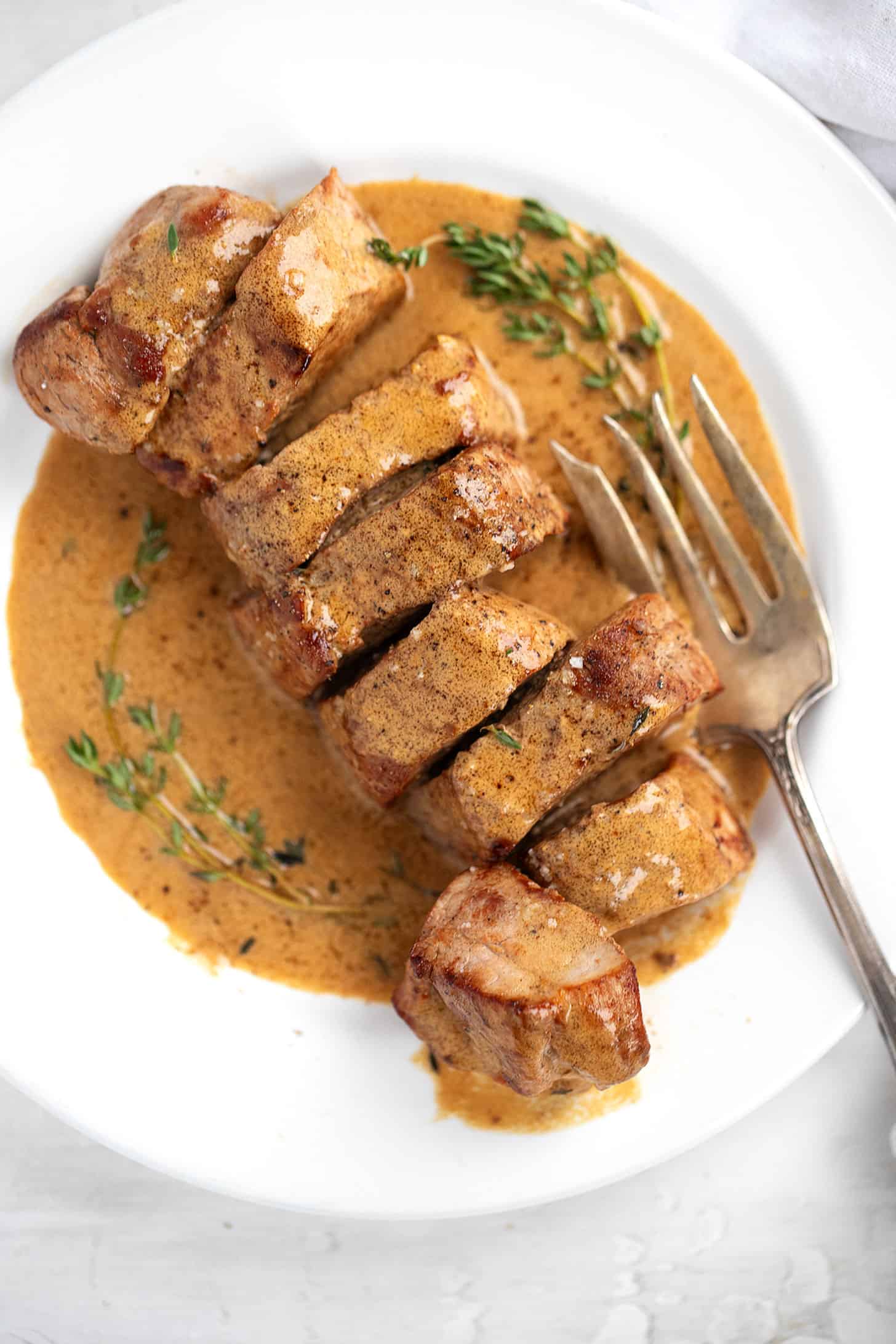
What to serve with Pork Tenderloin with Mustard Sauce
- Roasted Brussels sprouts
- Roasted butternut squash
- Roasted cauliflower
- Green beans, broccoli or broccolini
- Mashed potatoes or garlic mashed potatoes
- Oven-roasted mini potatoes
- Rice
Want to save this recipe?
Enter your email and I’ll send it to your inbox. Plus, you’ll get great new recipes from me every week!
By submitting this form, you consent to receive emails from Seasons and Suppers.
You can unsubscribe at any time.
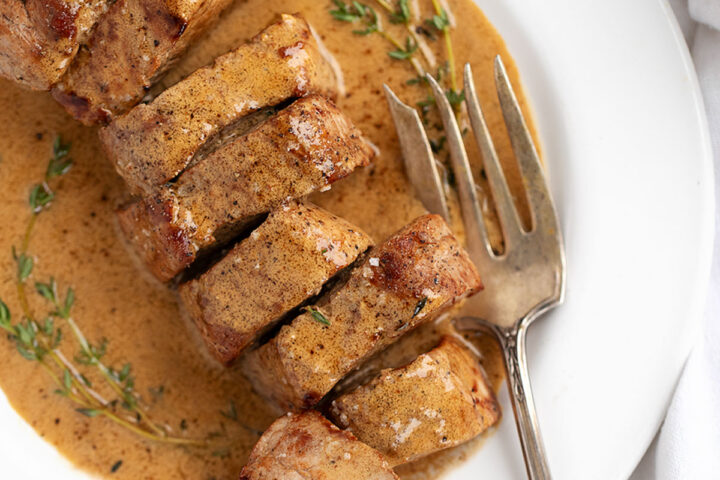
Get the Recipe: Pork Tenderloin with Mustard Sauce
Ingredients
- 1 lb pork tenderloin, approx, silver skin and visible fat removed
- 2 Tablespoons extra virgin olive oil, DIVIDED
- 2 Tablespoons butter, DIVIDED
- 1/4 cup heavy whipping cream, 35% b.f.
- 1 Tablespoon Dijon mustard, *see Note 1 below for some variations
- Fresh thyme leaves, or a pinch of dried thyme leaves (or you can use a bit of parsley, rosemary or sage etc.)
- 1/4 cup chicken broth
- 1/4 cup white wine, or replace with more chicken broth
Instructions
- Tip! Start with the right pan! Use either a stainless steel skillet or a cast iron skillet. Don't use a non-stick skillet. Why? Because non-stick skillets won't give you those tasty brown bits when browning the pork (known as "fond") and fond is so delicious it would be a shame to miss out on it.
- Prepare the pork tenderloin by removing the silver skin and any visible fat. Season the pork with salt and pepper.
- Tip! If using a stainless steel pan, the pan will tell you when the pork is sufficiently browned underneath by releasing the meat from the pan. So to test, simply nudge the meat. If it's still stuck to the pan, it's not ready to flip yet.
- Heat a stainless steel or cast iron skillet over medium high heat for 1 minute, then add 1 Tablespoon of butter and 1 Tablespoon of olive oil to a skillet. When the butter foaming subsides, add the pork to the skillet, curving it if necessary so it lays flat. Brown it well on all sides (top, bottom and both sides), for about 5-6 minutes total. Remove the pork to a cutting board and turn off the heat under the skillet so it cools down a bit.
- Cut the pork tenderloin into 1-inch thick slices.
- Return the skillet to the heat, over medium-high heat. Add 1 Tablespoon of butter and 1 Tablespoon of olive oil to the skillet. When the butter has melted, return the pork slices to the skillet and brown well on all sides, about 2-3 minutes on each side. (I like to further brown the side edges a bit more, too.) The pork should be cooked through at this point. If you have an instant read thermometer, you can check them. They should be 140-145F internal temperature.
- Remove pork slices to a warm plate (or loosely tent the pork slices with aluminum foil). Lower the heat under the skillet to medium heat.
- Tip! Heavy cream is recommended as the high fat content prevents the cream from splitting when cooked with acidic ingredients, such as wine and lemon juice.
- If using wine, add the wine to the hot skillet. Allow the wine to cook for 1 minute, while scraping up the browned bits from the bottom of the pan (The liquid should boil vigorously, if not increase the heat under the pan slightly). If using only chicken broth, add all at once and scrap up the browned bits in the pan while it heats.
- Add the cream to the pan and stir to combine. Add the mustard and stir in. Add the thyme leaves, if using. Taste the sauce and add additional salt and pepper, as needed.
- Arrange pork slices on plate (if there are pan juices on the plate, you can add them to the sauce and stir in). Pour the warm sauce over pork slices and serve. Garnish with thyme sprigs, chopped herbs or parsley.
Notes
Adapted from a Mark Bittman recipe
More pork tenderloin recipes to love!
Hi! I’m Jennifer, a home cook schooled by trial and error and almost 40 years of getting dinner on the table! I love to share my favourite recipes, both old and new, together with lots of tips and tricks to hopefully help make your home cooking enjoyable, stress free, rewarding and of course, delicious!


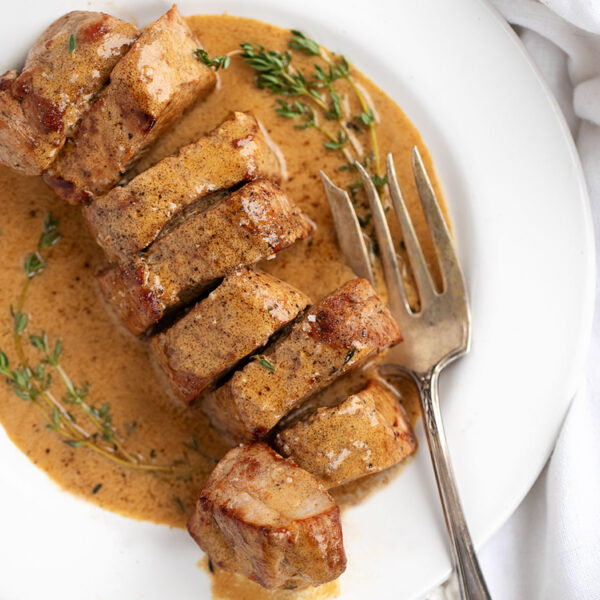
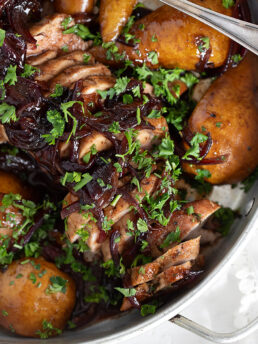
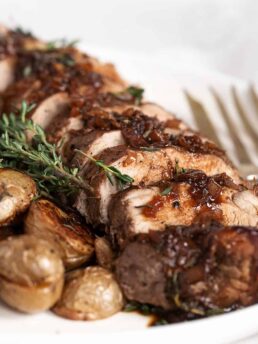


This was really good and very fast and easy to make. I had been “off” pork tenderloin for a long time, but this was good, juicy and tender
I’m so happy to hear, Marjory :) Thanks so much!
Hi Jennifer – Your recipe is well written and sounds quite clear and straight forward. However . . . I still like to watch videos when they’re included with a recipe. The link to the video here seems to be broken – it’s getting me to the title “Watch Video” but no video!! Am I missing something? I’m looking forward to trying this this out very soon! Thx – El
Hi El, the video show and plays well for me. If it isn’t showing for you, you may need to turn off any ad blockers for it to show.
Thanks, Jennifer. Can’t figure out how to do that, so will muddle through without visuals and let you know how it works out! Cheers, El
Made this the day you posted it and loved it!! So easy and flavorful – and the aroma!! Fantastic dish and takes no time at all and ingredients were all on hand! My new fave pork dish!
So pleased you enjoyed it, Marcia! Thanks so much :)
I made this recipe the first night that I received the e-mail. It was so easy and absolutely delicious. Served it with mashed sweet potatoes and broccoli. I had leftovers and the next night and I reheated it and served it over spaghettini.
I’m so glad you enjoyed it, Sally. It all sounds lovely :) Thanks so much!
Made this delicious pork recipe today!
So quick and easy to make. Thank you so much for sharing.
I added this to my recipe file; will definitely make this dish again!
Hi Diana and I’m so glad you enjoyed it! Thanks so much :)
Jennifer, I have done several of your pork tenderloin recipes all successful. That is saying a lot as there are endless recipes online, yet yours are always a notch above. Also, your recipe writing, tips and notes are exemplary. Never a question unanswered. This post is enticing because you cut pieces and brown separately. This adds a different twist. I am wondering if I add the pieces back into the sauce for moments rather than saucing the top, it might just add an irresistible reduced coating to each piece. Just wondering what you think, maybe you tried it before posting and learned that it wasn’t a good move!
Hi Den and a great question! You certainly could add the pork back into the sauce. The only reason not to do so would be purely aesthetic, in that I think it makes a prettier dish to pour the sauce over-top and to allow the lovely browning of the meat to shine.
I think ideally (if I weren’t plating for photography or pretty presentation for entertaining), I would plate a few pieces of pork on individual plates and pour the sauce over-top, so there is extra sauce on each plate to enjoy with the pork. This is probably the compromise between the two.
It’s probably worth noting that the sauce cooks really quickly, so the time that the pork is out of the pan is quite short and probably the perfect time for the meat to “rest”. Returning to the pan probably isn’t necessary to warm the pork, so it would just be down to personal preference really.
Jennifer, what a great reply, you covered it all. Now I am confident whichever decision I make. Thank you.